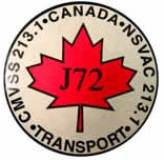Using the right child car seat is the best way to prevent serious injury to children in collisions. This information will help you find the right child car seat for your child's height, weight and development.

What to look for
When you buy a child car seat for use in Canada, look for the National Safety Mark label attached to the seat. This label indicates that the seat complies with Canadian regulations and standards and is legal for use in Canada.
Every child car seat and booster seat sold in Canada has an expiry or useful life date on it and should not be used past that date.
Child car seats for infants
Newborn babies and infants need special protection while in a vehicle. In a collision, a properly installed rear-facing child car seat can save your baby's life.
Ontario's Highway Traffic Act requires children to use a rear-facing car seat until the child weighs at least 9 kg (20 lb.).
It's best to keep your child in a rear-facing child car seat until they reach the manufacturer's recommended maximum weight and height limits. Some rear-facing car seats are made for children that weigh up to 20 kg (45 lb.)
When a child outgrows the maximum weight or height limits of an infant rear-facing car seat, they may move to a larger convertible infant/child car seat and stay rear-facing until the child is ready to face forward.
Child car seats for toddlers
Ontario’s Highway Traffic Act allows children weighing 9 kg to 18 kg (20 to 40 lb.) to use a forward-facing child car seat or a rear-facing car seat as long as the car seat manufacturer recommends its use.
It's best to keep your child in a forward-facing child car seat until they reach the manufacturer's recommended maximum weight and height limits.
A forward-facing car seat uses a tether strap to prevent the child car seat from moving forward and causing injury in a collision. It is important to use the tether strap exactly as the manufacturer recommends.
Booster seats
Booster seats raise children so adult seat belts protect them better. Booster seats protect children from serious injury 3-½ times better than seat belts alone.
Ontario’s Highway Traffic Act requires children weighing 18 kg to 36 kg (40 to 80 lb.), standing less than 145 cm (4 ft. 9 in.) tall and who are under the age of 8 to use a booster seat or allows the continued use of a forward-facing seat as long as the car seat manufacturer recommends its use. It’s best to keep your child in a booster seat until they reach the manufacturer’s recommended maximum weight and height limits.
Seatbelts
Seatbelts are designed for adults and older children. Children may be ready to move from a booster seat to a vehicle's seatbelt once:
- they can sit all the way against the back of the vehicle seat with legs bent comfortably over the edge and maintain this position for the entire trip
- they can have the shoulder belt flat across the shoulder and chest
- the lap belt crosses over the hips, not the stomach
Ontario’s Highway Traffic Act allows a child to use a seatbelt alone when any one of the following occurs:
- Child turns 8 years old, or
- Child weighs 36 kg (80 lb.), or
- Child is 145 cm (4 ft. 9 in.) tall or more
All drivers are responsible for ensuring that passengers under 16 are secured properly.